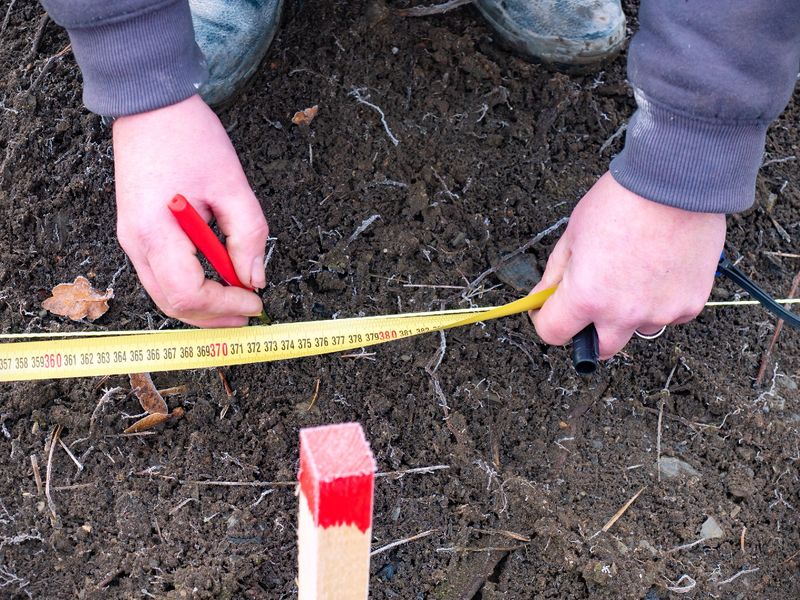Welches Gemüse kann man zu Hause nachwachsen lassen?
Wussten Sie, dass manche Gemüsesorten aus Küchenabfällen nachwachsen können, die normalerweise weggeworfen werden? Dies ist eine großartige Methode, um Geld zu sparen und Lebensmittelverschwendung zu reduzieren (was Treibhausgase erzeugt). Nicht nur das, es ist auch eine einfache und zufriedenstellende Art zu sehen, wie etwas aus dem Nichts wächst!

Gemüse nur in Wasser nachwachsen lassen
Es gibt mehrere Gemüsesorten, die in einem Behälter mit normalem Wasser nachwachsen können. Grüne Zwiebeln und Sellerie sind dafür bekannt, aber es gibt noch mehrere andere Gemüsesorten, die auf diese Weise wachsen können. Dies ist der einfachste Weg, um Gemüse aus Resten nachwachsen zu lassen, aber beachten Sie, dass Gemüse, das in Wasser nachwächst, möglicherweise nicht so viel Geschmack hat oder so groß wird wie andere Gemüsesorten, da ihm keine zusätzlichen Nährstoffe zugeführt werden.
Nachdem Sie den untenstehenden Prozess überprüft haben, finden Sie eine Liste von Gemüsesorten, die gut auf das Wachsen in Wasser ansprechen.
- Schneiden Sie das Gemüse von der Basis ab und lassen Sie dabei etwa 1 bis 2 Zoll/3 bis 5 cm einschließlich aller sichtbaren Wurzeln zurück.
- Stellen Sie die Wurzelbasis in einen Behälter mit Wasser, der tief genug ist, um die Wurzeln vollständig zu bedecken. Wählen Sie einen Behälter, der das Gemüse stabil hält, falls erforderlich.
- Stellen Sie den Behälter an einen warmen, sonnigen Ort und wechseln Sie das Wasser alle 1 bis 2 Tage.
- Sie sollten innerhalb weniger Wochen neues Wachstum feststellen können. Sie können Stücke zum Verwenden abschneiden oder das Gemüse ernten, wenn es vollständige Größe erreicht hat.
Gängige Gemüsesorten, die in Wasser nachwachsen können, sind:
Bok choy, Kohl, Fenchel, Grüne Zwiebeln, Lauch, Zitronengras

Sie können auch einige Kräuter aus Stecklingen in Wasser nachwachsen lassen. Gute Optionen für diese Methode sind:
Basilikum, Koriander, Zitronenmelisse, Minze, Oregano, Salbei, Thymian.

Wachsen Sie Gemüse in Wasser und Erde wieder an
Es gibt auch mehrere weitere Gemüsesorten, die Sie zu Hause wieder anbauen können, indem Sie sie in Wasser starten und sie dann in die Erde verpflanzen, sobald Wurzeln ausgesprossen sind. Obwohl dies ein etwas komplizierterer Prozess ist, ist er immer noch sehr einfach.
- Befolgen Sie den Prozess des Gemüseanbaus im Wasser. Sobald es Wurzeln hat, die mindestens 1 Zoll / 2,5 cm lang sind, kann es in die Erde überführt werden.
- Bewegen Sie das bewurzelte Gemüse in einen Topf mit leichter, gut drainierender Erde für den Innenanbau oder pflanzen Sie es direkt in einen vorbereiteten Bereich des Gartens. Für Wurzelgemüse wie Kartoffeln, die drinnen angebaut werden, stellen Sie sicher, dass der Behälter groß genug ist, um das resultierende Gemüse aufzunehmen. Stellen Sie sicher, dass die Wurzeln mit Erde bedeckt sind und gründlich bewässert werden.
- Bewegen Sie die Pflanze zurück an einen sonnigen Standort. Es sollte innerhalb weniger Wochen, je nach Art, zu neuem Wachstum beginnen. Ernten Sie das Gemüse, wenn es die volle Größe erreicht hat.
Geeignetes Gemüse für diese Methode sind:
Brokkoli, Sellerie, Grünkohl, Kartoffeln, Süßkartoffeln, Yams.

Regrow Gemüse aus Samen
Viele der Gemüsesorten, die wir regelmäßig essen, haben keimfähige Samen, die geerntet und angebaut werden können. Die Methode, um erfolgreich Gemüse aus Samen zu ziehen, erfordert ein wenig Versuch und Irrtum, aber diese Methode funktioniert für die meisten Sorten.
- Entfernen Sie die Samen und reinigen Sie sie gründlich, um alle Fruchtflecken zu entfernen (die dazu führen können, dass die Samen verrotten).
- Breiten Sie die Samen auf Wachspapier auf einer flachen Oberfläche an einem kühlen, trockenen Ort aus.
- Lassen Sie die Samen mindestens eine Woche lang trocknen (vorzugsweise 2 bis 3 Wochen). Dann können Sie sie entweder zum späteren Gebrauch aufbewahren oder sofort pflanzen. Spezifische Anforderungen variieren je nach Art, aber die meisten Gemüsesamen benötigen konstante Feuchtigkeit, hohe Luftfeuchtigkeit, warme Temperaturen und helles indirektes Sonnenlicht, um zu keimen.
Gemüse, das aus Samen nachgewachsen werden kann, umfasst:
Bohnen, Gurken, Erbsen, Paprika, Kürbis, Tomaten, Kürbis.
































































